The top 10 most popular Blogs from 2020
By Troy Keith, Collection Engagement | 23 December 2020

The top 3 most viewed John Oxley Library blogs posted in 2020.
With the end of 2020 approaching, we are taking a look back at our social media platforms to see what were the most popular posts from the year and have a closer look at the collections and stories associated. This blog takes a look at the top 10 most viewed John Oxley Library blogs posted in 2020.
As the COVID-19 pandemic spread across the world during 2020, State Library like most businesses and organisations had to close our South Bank building to onsite visitors and think about how to pivot our services digitally. During this time we realised how important our social media platforms were for sharing our collections, their stories and Queensland's history in general. Through our various platforms we can reach far more people than we can service onsite, we can reach new audiences, not only across the state but also across the world.
JOHN OXLEY LIBRARY BLOG TOP 10
Number 10:
"She won’t last a week," said Peter when she turned up for work that first day. It was 1939 and 15-year-old Gwen Mullins had secured a job as typist and cashier at the recently refurbished Christie’s Café at 217 Queen Street, Brisbane. Peter could not have been more wrong. Gwen worked at Christie’s until it closed on the Australia Day weekend of 1976. This blog follows Gwen 44 years after the closure of Christies Cafe as she visits State Library's exhibition Meet me at the Paragon: the Greek cafe phenomenon.
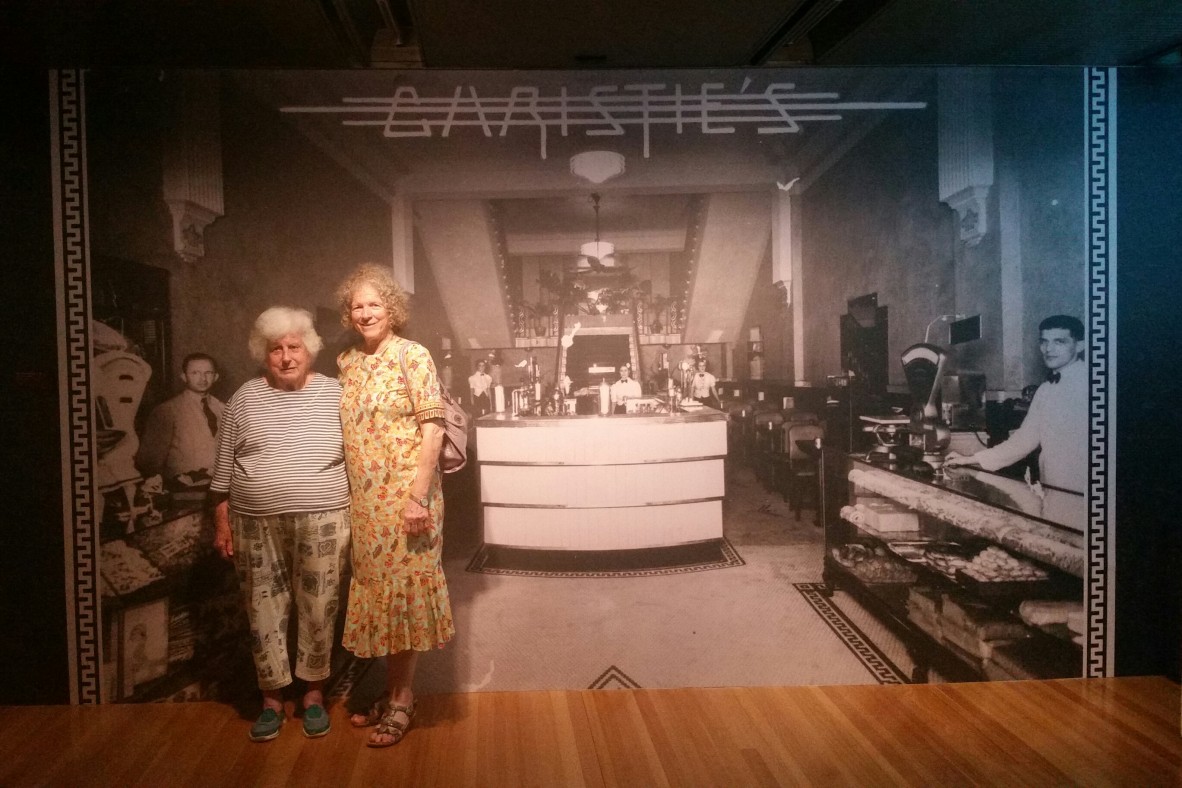
Gwen Mullins and Sister Elvera Sesta at State Library of Queensland's Meet me at the Paragon exhibition, January 2020. Photograph courtesy of Toni Risson
Number 9:
Lucy’s story is a tale of turn-of-the-century Queensland, a place of remote frontiers, aspirational migrants and the mistreatment of Aboriginal people. Via a series of family photographs and papers donated to the John Oxley Library by a descendant over a period of 15 years, the blog tells the saga of the Moss family and the story of an Aboriginal girl named 'Lucy' who joined the family at Ormiston in the late 1890s. This captivating, tragic story leaves us with more questions than answers.
Lucy and Janet Mayne Campbell, ca 1897. 6820 Ronald Monroe photographs. John Oxley Library, State Library of Queensland.
Number 8:
Queensland Quarantine Quilt comes into State Library's collection
In early May, right in the midst of the strictest lockdown any of us have ever experienced, ABC Radio Brisbane put out a call to Queenslanders to contribute a small textile square which would be made into a ‘quarantine quilt’. The quilt was a true community art project with the aim of showing gratitude to Queensland’s dedicated healthcare workers as well as raising awareness of the ABC and the role it plays in the wider community. The only criteria were that the squares needed to measure 15cm x 15cm, they should feature joyful and colourful motifs, and they needed to represent people’s isolation experiences during the COVID-19 pandemic, with a focus on what made them happy. This blog is about the donation of the quarantine quilt by ABC Radio Brisbane to the John Oxley Library.
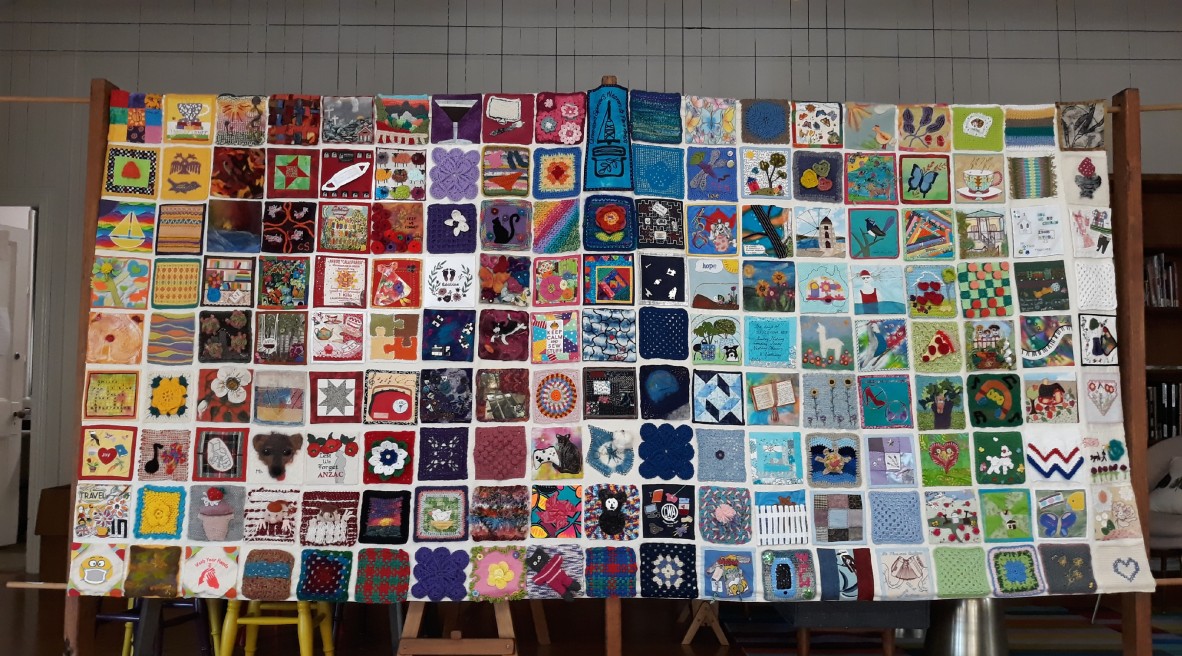
Queensland Quarantine Quilt. Image courtesy Queensland Spinners Weavers and Fibre Artists.
Number 7:
Surf, sand and fun: summer holidays at the Gold Coast
This blog looks at the history of the Gold Coast and how it became a family holiday destination.
State Library's Engagement Officer Anna Thurgood reminisces: Ahhh, summer. For my family, and thousands of others who grew up in Brisbane and beyond in the 1950s, 60s and 70s, summer meant an annual pilgrimage to the Gold Coast to spend a week or two swimming or riding waves on the ‘lilo’, playing mini-golf, jumping on the in-ground trampolines at Southport and having your breakfast order delivered to your motel room through a hole-in-the-wall box. Such luxury! And sometimes the adults would dress up and sneak over the border to play the forbidden poker machines. Our family haunt was the Nestl’ Inn at Tugun, far from the glitz and glamour found in Surfers Paradise but set right on the beach and everything we needed was in easy reach. These were the days before theme parks, air conditioning and the myriad activities available now. But they are fondly remembered as bright, hot, sunny and sandy days.
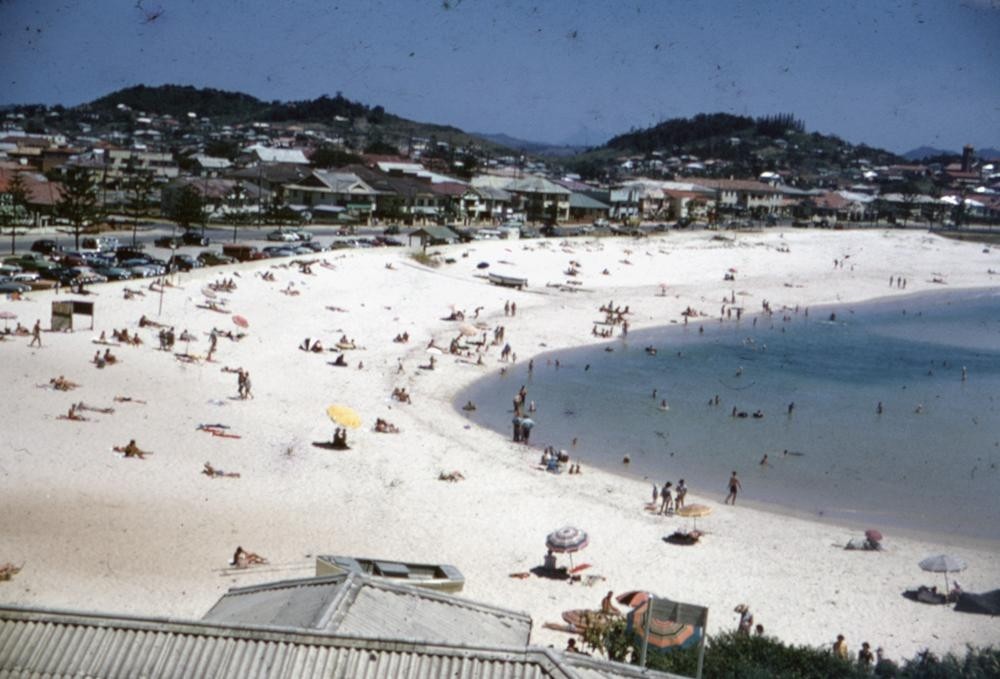
Coolangatta Beach, Gold Coast, Queensland, 1957. John Elmes, 6873 John Elmes Colour Slides, Image no. 6873-0001-0008, John Oxley Library, State Library of Queensland.
Number 6:
Queensland hospitals on the pandemic frontline
This blog post was the first in a series that looked at the history of Queensland's hospitals and healthcare workers. This blog focused on Ingham hospital in north Queensland.
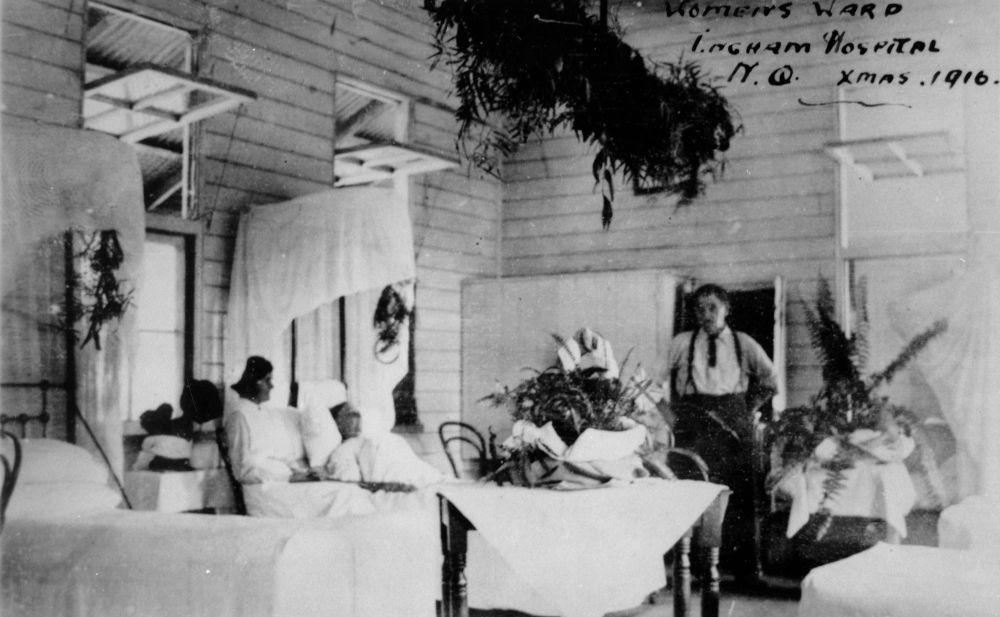
Women's ward of the Ingham Hospital, Queensland, 1916. Negative number: 188283, John Oxley Library, State Library of Queensland.
Number 5:
Café Royal and Elite Café, Bundaberg
The Lathouras Brothers migrated to Australia from Alatsata in Asia Minor in 1906. By 1923 Jannos (Jack) Lathouras and his brothers, Michael and Mark, had opened two cafes in the main street of Bundaberg, Bourbong Street. Bundaberg was a thriving provincial Queensland town during the 1920s.
From State Library's exhibition Meet me at the Paragon: the Greek cafe phenomenon, this blog looks at the history of Greek migrants, the Lathouras Brothers and their two Bundaberg cafes.
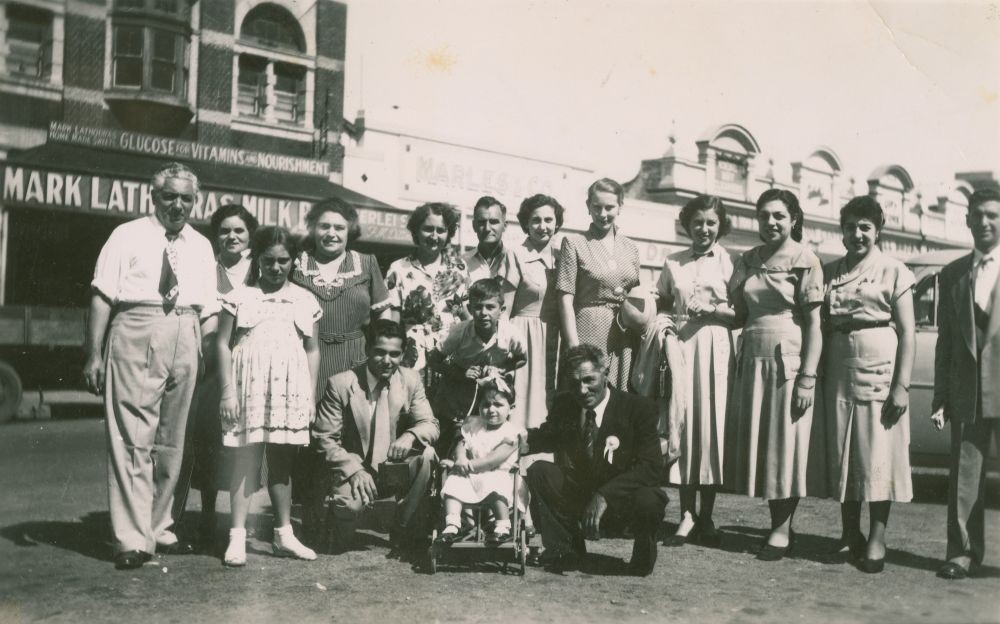
Group portrait with Mark Lathouras and others outside the Cafe Royal, Bundaberg. 31387 Lathouras Brothers Elite Cafe and Cafe Royal Bundaberg photographs, Image 31387-0001-0010, John Oxley Library, State Library of Queensland.
Number 4:
Charlie's Wars - Charlie Fletcher 1895-1941
This blog told the history of soldier Charlie Fletcher, an Indigenous Queenslander who served in both the First and Second World Wars.
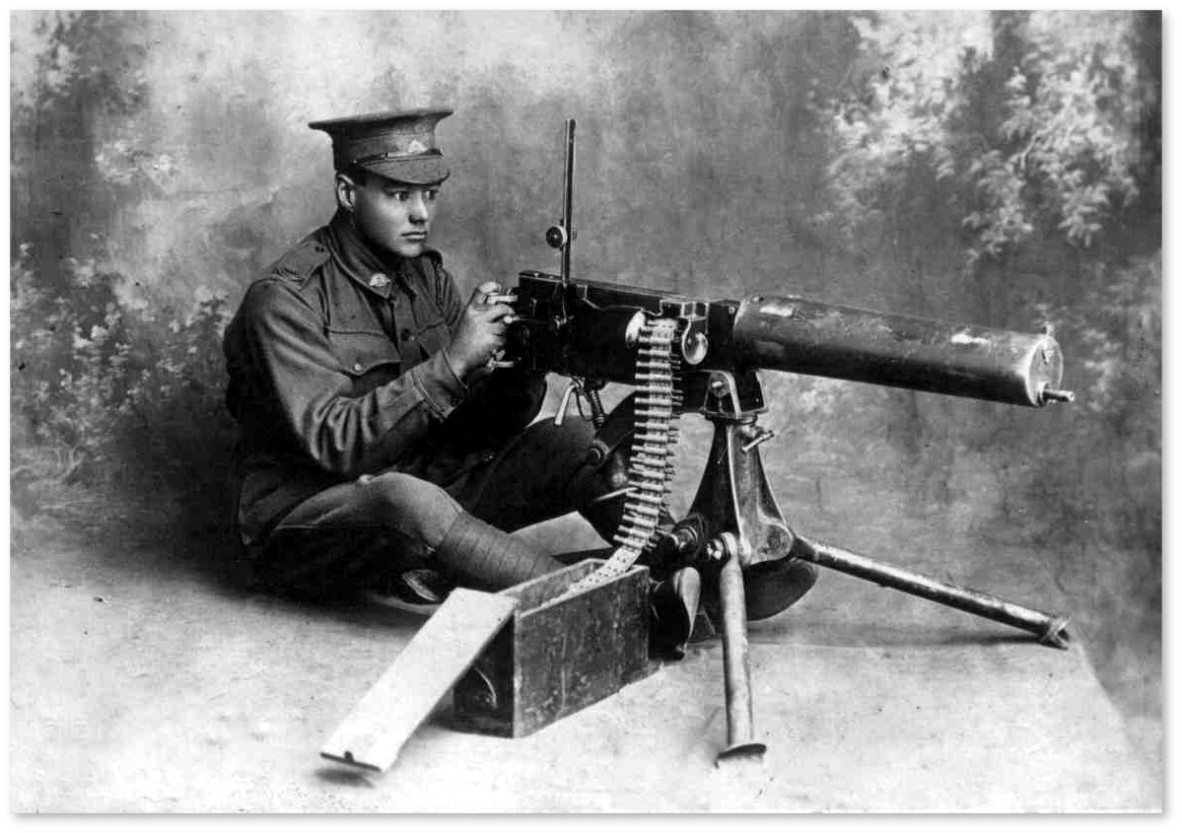
Gunner Charles Fletcher, 12th Australian Machine Gun Company, 1916. (Image courtesy Fletcher family)
Number 3:
Ordine dei Cavalieri di Vittorio Veneto
This blog is about a very unusual and interesting donation State Library received in early 2020 from the Consulate of Italy in Brisbane. The gift, now accessible in a digital format, was a large handsome volume titled Ordine dei Cavalieri di Vittorio Veneto or, Order of the Knights of Vittorio Veneto, edited by Italian historian Franco Giuseppe Gobbato and financed by the Prosecco DOC Consortium, a northern Italian organisation in the region of Veneto which protects and promotes the interests of vine-growers, winemaking companies and bottlers. The particular interest of the Order of the Knights of Vittorio Veneto is in a list of names, names which are deeply connected with two momentous events in a history shared by Italy and Queensland - the First World War and post war emigration from Italy to Australia.
Italian soldiers in the trenches during the First World War. Source: Corriere Della Sera
Number 2:
Rare photos from the 1919 Influenza epidemic in Queensland
This blog was written by 2019 John Oxley Library Fellow, Matthew Wengert who explored photographs taken during the Spanish Influenza pandemic in Queensland in 1919.
The Covid-19 pandemic is occurring in an era of hyper-abundant photographic images. It might surprise some people how few images there are from the 1919 Pneumonic Influenza (‘Spanish Flu’) epidemic in Queensland. State Library has the largest available collection of rare photos from that major moment in the State’s history (Queensland’s deadliest disaster by far). But there are only a couple of dozen images, from only a few places.
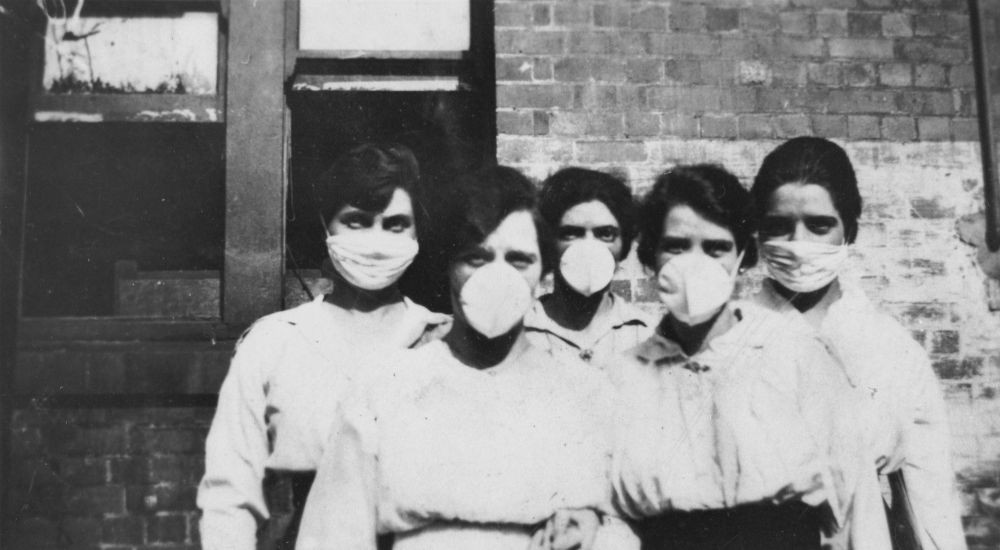
Women wearing surgical masks during the influenza epidemic, Brisbane, 1919. Neg no 108241, John Oxley Library, State Library of Queensland
Number 1: The most viewed John Oxley Library blog posted in 2020 is...
Café Mimosa, Maryborough
The Andronicus Bros, Jim and George, formerly from the Greek island of Kythera, advertised their Café Mimosa in Kent Street, Maryborough in the local newspaper proudly promoting, "We serve the Best brands of tea – Pure Coffee on Milk – Best Quality Cocoa." Brothers Jim (Dimitris Anargeros) and George Andronicus and their families built their position in the township based on the tradition that people "go where they get quality, lowest prices, prompt attention, civility and cleanliness".
From State Library's exhibition Meet me at the Paragon: the Greek cafe phenomenon, this blog looks at the history of Greek migrants, the Andronicus brothers and their Maryborough cafe.
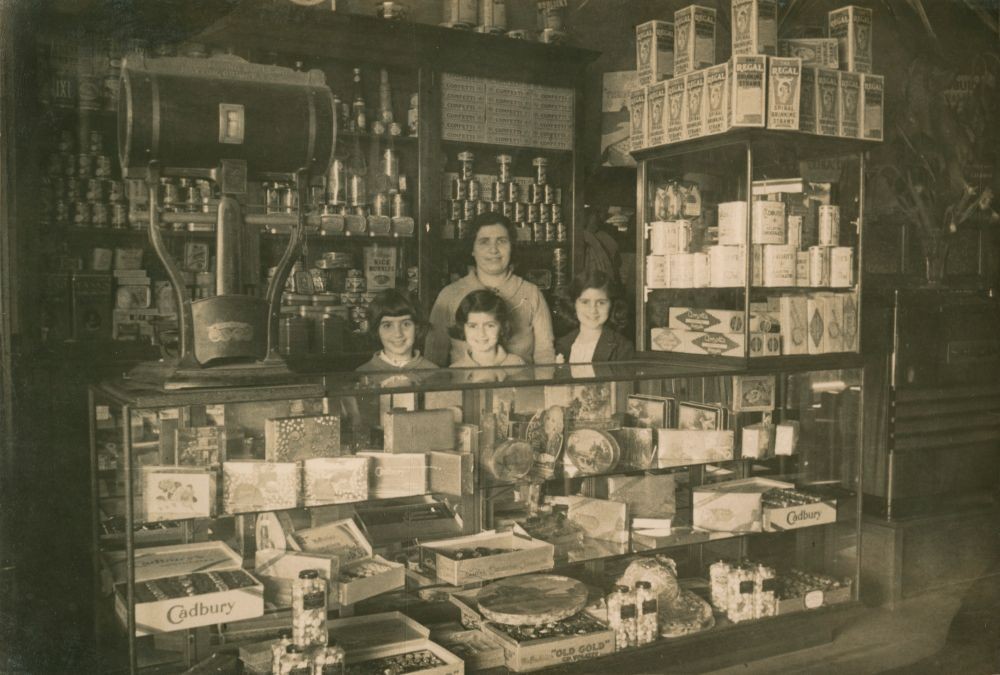
Irene Andronicus with her children, Katie, Ada and Mary, behind Cafe Mimosa Counter, Maryborough, 1930. 32173 Andronicus Family photographs, Image 32173-0001-0011, John Oxley Library, State Library of Queensland.
Comments
Your email address will not be published.
We welcome relevant, respectful comments.